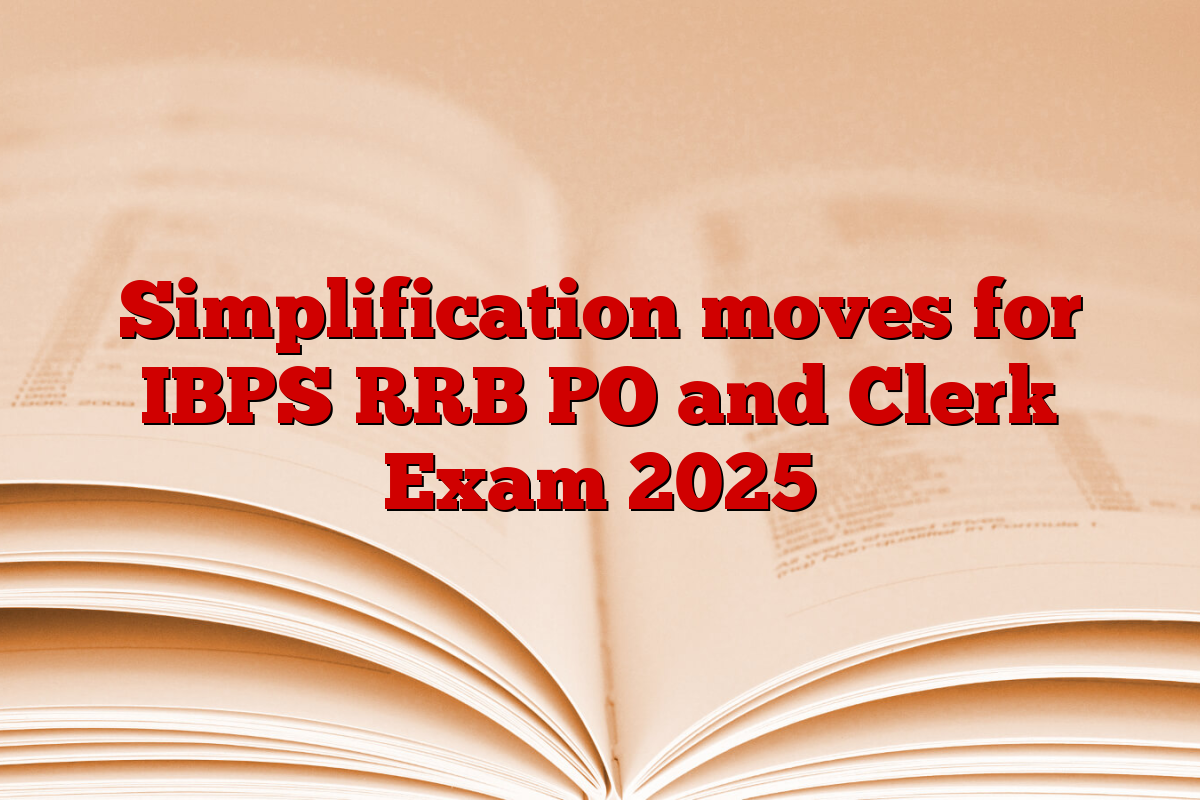Simplification is one of the highest scoring subjects in IBPS RRB PO and Clerk Examination. Candidates who have mastered simplification, can try a large number of questions in a very short time, enhance their overall scores. With the IBPS RRB PO and Clerk Examination approaching close to 2025, it is important to adopt smart techniques to resolve simplification questions quickly and accurately. In this article, we bring you the best simplification tricks, shortcuts and preparation tips to help you maximize your performance in the quantitative aptitude section.
Simplification for IBPS RRB PO and Clerk Exam 2025
Simplification questions usually appear in preliminary examinations and sometimes as part of the data interpretation set. These questions are designed to test the speed and accuracy of the candidates in original arithmetic operations such as joint, subtraction, multiplication, division, class roots and percentage calculation. Since these origins are still highly scoring, there may be a game-changer to master simplification.
Simplification moves for IBPS RRB PO and Clerk Exam 2025
In IBPS RRB PO and Clerk Prelims 2025, simplification to clean the cut-off may be your golden ticket. By applying the right tricks and coherent practice, you can easily try 20–25 questions within minutes in this section. Focus on accuracy with speed, as negative marking can affect your final score.
1. Connecting method: When you look at large or complex numbers, round the nearest tens, hundreds, or thousands to make the calculation faster.
Example: Solution: 498 × 51
Estimate this: 500 × 50 = 25000.
Now adjust the slight difference accordingly for accurate results.
2. Use of Bodmas Rules: Always follow the Bodmas sequence (bracket, order, partition and multiplication, addition and subtraction) while solving any simplification question. By doing the order incorrectly, wrong answers are often found.
3. Learn shortcut class and cubes: Remember minimum squares up to 30 and cubes up to 20. This will help rapid calculation during simplification of square roots and cube roots.
Example: (729 = 27 (because 27 = 729)
4. Digit Yoga or Digital Route: Sometimes, to verify the answer, the candidate can use marks. Until you get a single-united number, add the number of numbers repeatedly. This can quickly indicate whether your final answer may be correct.
5. Use of fractions in place of decimal: For easy calculations, convert decimal into fractions.
Example: 0.25 = ,, 0.5 = ½, 0.75 = ½.
6. Know common algebraic identity: Algebraic identity helps to simplify long expressions very fast. For example:
(A + b) ε = a γ + 2ab + bg
,
(A+b) (ab) = a – b γ
Major preparation tips for simplification
- Daily practice: Set a goal to practice at least 30-40 simplification questions per day.
- mock test: Try regular sectional and full-flavored fake tests to track your speed and accuracy.
- Time Management: During practice sessions, use a stopwatch to challenge yourself to solve rapid questions.
- Identify the shortcut: When practicing, search for alternative, sharp methods of calculation consciously.
- Analyze the mistakes: Carefully review the wrong answers to understand where you have gone wrong and how you can make the problem easier.
Common mistakes to avoid while solving simplification
Being vigilant about general mistakes can help maintain both speed and accuracy during the examination.
- Leave the Bodmas order.
- To ignore the rounding during adjacent.
- Calculation errors due to haste or subtraction.
- Do not do dual examination of units (especially when decimal is involved).
